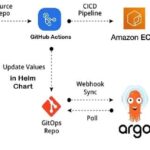
Containerization & Kubernetes Automation
Moving to AWS Without a Plan? That’s Like Moving House Without Boxes
Migrating legacy systems to AWS is not just a technical task — it’s a strategic business decision. A successful migration requires more than simply “lifting and shifting” workloads; it demands a thoughtful assessment of your current environment, future goals, and the people and processes involved.
In this article, we outline a structured approach to planning and assessing a migration from legacy infrastructure to AWS, combining technical insights with strategic considerations.
1. Understand the Why Before the How
Too often, cloud initiatives begin with technology-first thinking. But before making any decisions about platforms, services, or tools, take a step back and ask:
- What are we solving for?
- What business outcomes will define success?
Typical business drivers include:
- Cost reduction and better operational efficiency
- Improved scalability and flexibility
- Faster time-to-market and innovation enablement
- Enhanced security and compliance posture
Set clear, measurable KPIs early — such as availability targets, cost savings, or application performance benchmarks — to guide and validate progress.
2. Map the Current State
Understanding your current environment is critical. An incomplete picture leads to flawed assumptions and higher risk.
Key steps:
- Inventory all applications, databases, infrastructure, and interdependencies
- Document network topology and security architecture
- Identify licensing constraints and compliance obligations
- Assess technical debt and system fragility
Tools like AWS Application Discovery Service can help automate parts of this process, but human insights — especially around business processes — are equally important.
3. Classify Workloads for Migration Paths
Not all workloads should be treated the same. Use the 6 R’s of migration as a framework — particularly:
- Rehost (lift and shift): Fastest approach with minimal changes
- Replatform: Optimize parts of the stack without deep refactoring
- Refactor: Redesign for cloud-native architectures (e.g., microservices)
- Retire or Replace: Sunset legacy systems or switch to SaaS alternatives
Workload classification helps align technical effort with business value, reducing unnecessary complexity.
4. Address Security and Compliance Early
Security cannot be retrofitted. A secure-by-design approach ensures that risks are mitigated proactively.
Key focus areas:
- Identity and Access Management (IAM): Define roles, policies, and least-privilege access
- Encryption: Protect data at rest and in transit
- Regulatory compliance: Consider industry-specific frameworks (HIPAA, GDPR, ISO, etc.)
- Monitoring and logging: Establish observability from day one
Leverage AWS-native tools like AWS Security Hub, GuardDuty, and Config to automate and enforce security policies.
5. Build a Phased Migration Roadmap
Migrations should be iterative, not big bang. Develop a clear roadmap that balances risk, complexity, and impact.
Roadmap considerations:
- Pilot first: Migrate a representative workload to validate tools and approach
- Phase workloads: Group migrations by business unit, function, or risk level
- Set clear cutover and rollback plans: Ensure contingency options are documented
- Schedule with business cycles in mind: Avoid downtime during peak periods
This phased model supports agility while maintaining operational stability.
6. Engage Stakeholders Across the Organization
Cloud migration impacts more than IT. It touches every part of the business — from finance and compliance to operations and product teams.
- Align stakeholders early: Ensure IT, security, legal, and business leaders are part of the planning process
- Communicate clearly: Share timelines, milestones, and expectations
- Support change management: Offer training and resources to ease adoption
Organizational readiness is just as important as technical readiness. Both must be managed in parallel.
Tooling Isn’t the Strategy — Governance Is
AWS provides powerful migration tools — such as:
- AWS Migration Hub
- Application Migration Service (MGN)
- Database Migration Service (DMS)
But tools alone don’t guarantee success. What makes the difference is a strong governance model, with clearly defined ownership, decision-making processes, and risk management practices.
Final Thoughts
Migrating legacy environments to AWS is a transformational journey, not a tactical project. A successful migration starts with a strong foundation: business alignment, detailed assessment, workload planning, and stakeholder engagement.
If you plan well, migrate with discipline, and govern effectively — the payoff is enormous.
Let’s Discuss
What’s been your biggest challenge in assessing or executing a cloud migration?
We’d love to hear your insights — reach out or leave a comment below.
Tags:
#AWS #CloudMigration #ITStrategy #DigitalTransformation #LegacyModernisation #CloudSecurity #CloudGovernance #EnterpriseArchitecture #CIO #CTO

